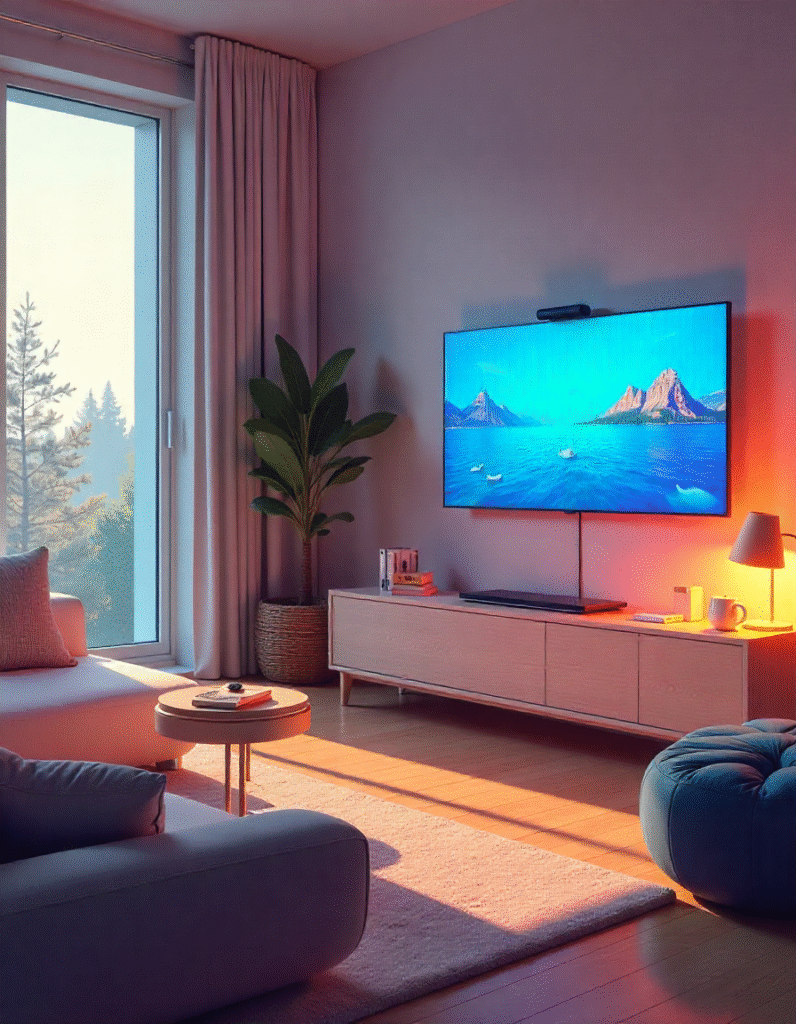The Gadget Revolution: Innovations Changing the Way We Live
Gadgets are more than just tools; they are essential components of modern living, transforming everything from how we communicate to how we work, travel, and even relax. In a world driven by technology, gadgets are evolving at an unprecedented pace, bringing exciting advancements to nearly every facet of our daily lives. As technology becomes more integrated into our routines, the gadgets we rely on are becoming smarter, more intuitive, and increasingly indispensable.
This article will explore the latest innovations in gadgets, their impact on different industries, and how these devices are shaping the future. From personal devices like smartphones to cutting-edge home appliances, we will delve into the technologies that are defining the next wave of gadgets.
1. Smartphones: The Multifunctional Powerhouses
Smartphones continue to be at the heart of the gadget revolution. These devices have evolved from simple communication tools to multi-functional hubs that integrate all aspects of our digital lives. They are no longer just phones; they’re portable computers, entertainment centers, and fitness trackers all in one.
-
The Rise of Foldable Screens: The introduction of foldable smartphones has changed the way we think about screen sizes. These gadgets offer a flexible display that allows users to have a larger screen while still maintaining the portability of a traditional smartphone. Devices like the Samsung Galaxy Z Fold and Huawei Mate X provide users with the flexibility to multitask and immerse themselves in content like never before.
-
Improved Camera Systems: Smartphone cameras have come a long way. With advancements in sensors, image processing, and AI-driven features, modern smartphones can now take professional-grade photos and videos. Features like night mode, portrait mode, and enhanced zoom capabilities have turned phones into versatile tools for both casual and professional photographers.
-
5G Connectivity and Beyond: With the rollout of 5G, smartphones are becoming faster and more reliable. This next-generation network offers ultra-fast download speeds, lower latency, and better connectivity, enabling everything from smoother streaming to faster data transfers. As more 5G-compatible smartphones are released, users will experience an even greater level of performance and connectivity.
Smartphones will continue to evolve, with upcoming models likely to feature even more advanced AI capabilities, improved battery life, and faster processing power, all while maintaining sleek and minimalist designs.
2. Wearable Technology: Health, Fitness, and Beyond
Wearable gadgets have become essential accessories, offering a unique blend of convenience, functionality, and health benefits. These devices not only keep track of vital health metrics but also offer new ways to interact with the world.
-
Smartwatches: More than just timepieces, modern smartwatches provide a wealth of features, from fitness tracking to notifications and even contactless payments. Brands like Apple, Samsung, and Fitbit are at the forefront, offering devices that monitor heart rate, sleep patterns, steps, and more. Some models even feature ECG monitors and blood oxygen sensors, empowering users to take control of their health and wellness.
-
Fitness Trackers: Devices like the Garmin Vivosmart and Whoop Strap are designed for users who want to take their fitness routines to the next level. These wearables track everything from steps to calories burned, with more advanced models analyzing sleep quality and recovery. The integration of AI allows these devices to offer personalized fitness suggestions based on individual data.
-
Smart Clothing: A new frontier in wearables is smart clothing, which includes garments that track biometric data. Examples include shirts that measure heart rate, jackets that heat up in cold weather, and socks that monitor foot movement during workouts. As the technology improves, expect to see more intelligent textiles that help with everything from posture correction to monitoring vital signs.
Wearable technology will continue to integrate more features, making them indispensable tools for fitness enthusiasts, tech lovers, and anyone seeking to improve their daily lives through better health tracking.
3. Smart Home Devices: Connecting Everything in Your Home
The smart home revolution has taken off, with gadgets designed to make homes more comfortable, secure, and efficient. From controlling lights and temperature to enhancing security, these devices make life easier and more convenient.
-
Voice Assistants: Smart speakers like Amazon Echo, Google Nest, and Apple HomePod have transformed how people interact with their homes. Through voice commands, users can control lights, play music, get news updates, and even shop online. These voice-controlled assistants are continually evolving, with enhanced AI capabilities and deeper integration with other smart devices.
-
Smart Thermostats and Lighting: Smart thermostats, such as Nest and Ecobee, learn your habits and adjust the temperature accordingly, helping you save energy and reduce utility bills. Similarly, smart lighting systems like Philips Hue and LIFX allow users to control the brightness and color of lights remotely or set schedules for energy efficiency.
-
Home Security Systems: With gadgets like Ring doorbells, Nest cams, and smart locks, homeowners can monitor their property in real-time, receive alerts, and even interact with visitors remotely. Smart security systems provide peace of mind by allowing users to track and secure their homes from anywhere in the world.
As AI, machine learning, and connectivity continue to improve, the smart home ecosystem will expand, offering even greater automation, security, and convenience for homeowners.
4. Virtual and Augmented Reality: The Future of Entertainment and Work
Virtual reality (VR) and augmented reality (AR) are two technologies that are rapidly changing how we experience entertainment, education, and even work. While VR creates fully immersive digital environments, AR overlays digital elements onto the real world, enhancing our perception of the physical space around us.
-
VR for Gaming and Entertainment: VR gaming has gained popularity with devices like the Oculus Rift, HTC Vive, and PlayStation VR, offering users an entirely new way to interact with video games. VR allows players to enter immersive worlds where they can move, interact, and experience environments in a way that traditional gaming cannot replicate. In addition to gaming, VR is used in movie theaters and theme parks to create fully immersive entertainment experiences.
-
AR for Practical Applications: Augmented reality is transforming industries by adding digital layers to real-world environments. In retail, AR apps like IKEA Place allow customers to see how furniture will look in their homes before making a purchase. In healthcare, AR is used for surgeries, helping doctors visualize organs and structures in 3D. The potential for AR to revolutionize shopping, education, and training is immense.
-
Workplace Collaboration: Both VR and AR are being used to create virtual workplaces, where employees can collaborate in real-time despite being in different physical locations. Virtual meetings, virtual whiteboards, and shared 3D spaces are allowing for new ways of working remotely.
With the development of more affordable and accessible devices, VR and AR will play an even greater role in the future, offering endless possibilities for entertainment, education, and professional collaboration.
5. Smart Glasses: A Glimpse into the Future of Wearables
Smart glasses are making waves in the world of wearable technology. These devices combine the functionality of smartphones with the convenience of wearable tech, offering users a hands-free experience to access information, make calls, and interact with their environment.
-
Augmented Reality Glasses: Companies like Microsoft with their HoloLens and Google with Google Glass are leading the charge in AR eyewear. These glasses overlay digital information on the real world, allowing users to see navigation directions, receive real-time data, or interact with virtual objects.
-
Fitness and Health Tracking: Smart glasses are also being used in the fitness space, with models that track activity levels, heart rate, and other health metrics. These devices allow users to monitor their health without needing to check a smartwatch or phone.
-
Entertainment and Communication: Smart glasses can display videos, make hands-free calls, and offer voice-activated assistants like Siri or Google Assistant. As technology improves, these glasses could become the next must-have accessory for tech-savvy consumers.
As the design and functionality of smart glasses improve, we can expect them to become even more integrated into our daily lives, providing seamless access to digital information on the go.
Conclusion
Gadgets have evolved from simple tools to complex devices that integrate deeply into our personal and professional lives. From smartphones and wearables to smart homes and VR, the gadgets of today offer convenience, entertainment, and efficiency in ways that were once unimaginable. As technology continues to advance, we can expect gadgets to become even more integrated, intuitive, and essential to our daily routines.






